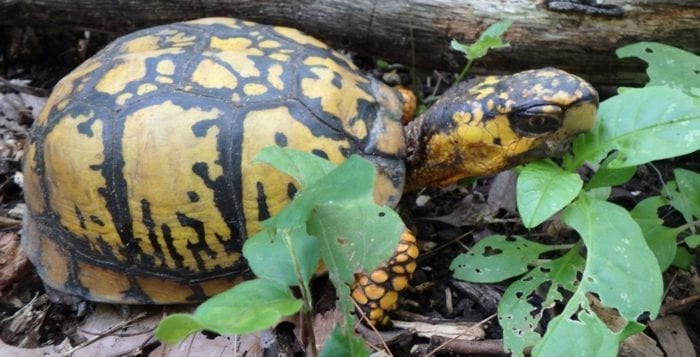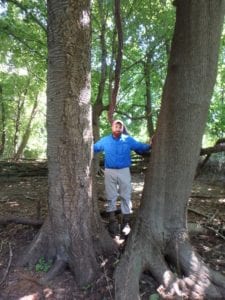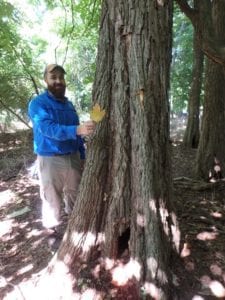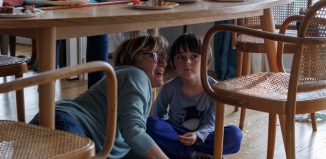3VCT, DEC receive optimistic survey about Patriots Hollow State Forest

Scientists have discovered natural wonders in a Setauket forest.

Researchers from the State University of New York College of Environmental Science and Forestry took to the 43-acre woods of Patriots Hollow State Forest, along Route 25A, across from Stop & Shop, to collect information on the forest composition and structure Aug. 8 and 9. The researchers hoped to develop management recommendations that would enhance the forest for biodiversity conservation and environmental education. The survey was funded by a grant from Avalon Park & Preserve, according to a press release from Three Village Community Trust.
In 2018, the community trust set up a steering committee led by Setauket resident and former teacher Leonard Carolan to clean up the woods and add a trail for people to walk through the forest, something which is currently difficult with downed trees and invasive plants, including Norway maple, Japanese aralia, Oriental bittersweet, black locust and Japanese stiltgrass.
After Carolan approached the New York State Department of Environmental Conservation and state Assemblyman Steve Englebright (D-Setauket) to seek help in cleaning up the forest, the community trust signed a stewardship agreement with the DEC. Carolan said the initial reports are encouraging.
“It looks like we’ll be able to restore it to an original native forest,” Carolan said.
He added that, in the future, there would be a loop trail near Route 25A and another one near the Main Street section, but before they are created some cleanup needs to be done and funds raised, which could take years.
Don Leopold, distinguished teaching professor from SUNY-ESF’s Department of Environmental and Forest Biology, along with research assistant Samuel Quinn, was among the researchers.
Leopold said it was his first visit to the forest, and he was impressed with the findings. Despite invasive plants and past agriculture that didn’t leave many remnant trees, he said they discovered many beautiful oak and hickory trees, adding that he had seen black oak and sassafras all over the Eastern United States, and amongst the largest he has seen were in Patriots Hollow.
“We went by some really great trees,” he said. “Ideally the trails will swing by those. They can’t miss these. There are really impressive specimens of some black oaks and some hickories, and we really enjoyed seeing them.”

The researcher said they also found spicebush in the forest.
“Spicebush is one of our most important native shrubs,” Leopold said. “It’s so important for wildlife coming for food. It’s a source of food for the spicebush swallowtail [butterfly].”
Leopold and Quinn discussed management of invasive plants in the forest with Bill Jacobs, Luke Gervase and Caroline Schnabl of Long Island Invasive Species Management Area who joined in the survey. Leopold said that they are optimistic that the invasives could be eliminated, which is vital for the growth of new trees.
Leopold added that a male box turtle, approximately 30 years old, was found in the wooded area. He said the species can live to be more than 100 years old, and the one they saw in Patriots Hollow reminded him a pumpkin with legs, as it was especially big and colorful.
The researcher said they encountered tick bombs while in the forest, with 100 to 200 small tick larvae starting to disperse at one time. He said when the lone star ticks are older their bites can cause problems as they can carry a disease that makes a person allergic to red meat.
“Until there are trails, and until some of these issues are addressed, it would be good to not have a bunch of folks running through here because the tick infestation can be a public health hazard,” he said.
Brian Leydet of SUNY-ESF will analyze ticks collected during the survey so recommendations can be made to the community trust and DEC about ways to reduce human-to-tick contact.
The 3VCT’s steering committee will look to include the community in the planning process and will work with the trust itself to seek grants and contributions. The initial implementation of the restoration and management plan will be funded by a grant of $500,000 secured by state Sen. John Flanagan (R-East Northport) in 2018, according to a press release from the trust.






